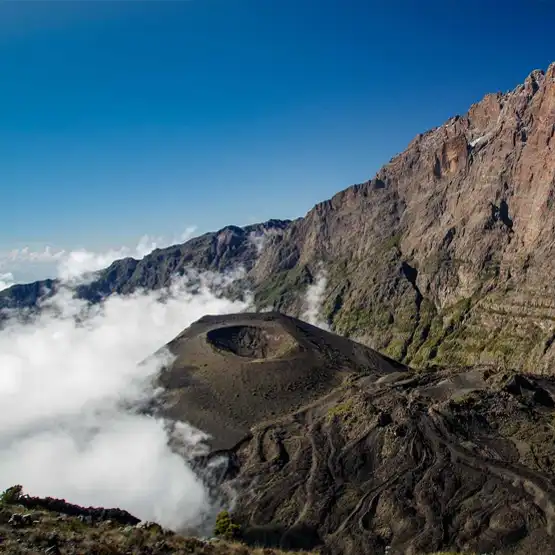Ever wondered how an ancient tribe communicates fluently without writing? The Hadzabe, one of the last hunter-gatherer tribes in Tanzania, use a unique language filled with clicking sounds that fascinates linguists worldwide. These sounds make their language one of the most distinct and complex, yet surprisingly effective forms of communication.
Alongside mastering their language, you’ll explore the survival skills that have kept the Hadzabe thriving for millennia. From tracking wildlife to foraging edible plants, their techniques are passed down through generations. The Hadzabe possess an unparalleled knowledge of their environment, which is vital in a world where such skills are rapidly disappearing.
Exploring the Unique Hadzabe Language
The Hadzabe language is truly one-of-a-kind, incorporating unique click sounds not found in many other languages. These clicks are used like vowels and consonants, and they give the language a rhythmic and musical quality. Linguists are fascinated by how these sounds can convey complex meaning and emotions. The variety in clicks allows for rich linguistic expression despite its oral nature. Communication within the Hadzabe community is efficient and deeply connected to their culture.
Learning the Hadzabe language offers insights into their way of life. Basic phrases help outsiders engage respectfully with the tribe. Observing their use of language can teach valuable lessons about the role of communication in daily survival. Oral traditions play a significant role, preserving stories and knowledge passed down through generations. This makes the language an integral part of their cultural identity.
Oral tradition is key to preserving the Hadzabe language and culture. Elders share stories, songs, and histories, ensuring the survival of their heritage. Young members of the tribe learn through listening and participation. This method of preservation is both engaging and effective. The Hadzabe prove that a written language isn’t necessary to maintain rich cultural traditions.
According to here is the article, the Hadzabe’s language skills are vital for survival. They use it to share knowledge on hunting, gathering, and navigating their environment. Their intimate understanding of the land is communicated orally. This exchange of information is crucial for their everyday life. The language embodies their connection to nature, reinforcing their traditional ways of living.
Characteristics of Click Sounds in Hadzabe Language
The Hadzabe language is known for its unique click sounds, which make it different from many other languages. These sounds act like vowels and consonants, adding a rhythmic flow to speech. The clicks are used in various positions within words, making them versatile and expressive. This distinctive feature of the Hadzabe language captures the attention of linguists worldwide. Its complexity is both intriguing and beautiful.
The clicks come in several types, each with its own specific sound and meaning. For example, there are dental clicks produced by placing the tongue against the teeth. There are also lateral clicks, which are made by the tongue against the sides of the mouth. These different types of clicks allow for a rich vocabulary. This variety helps the Hadzabe communicate effectively with each other in their environment.
This intricate use of clicks makes the Hadzabe language extremely efficient for everyday communication. The clicks are not random but follow specific rules and patterns. Understanding these patterns is key to learning the language. For outsiders, the variety can be challenging but fascinating to master. It’s a testament to the Hadzabe’s ingenuity in language development.
According to this post, the Hadzabe’s use of clicks is more than just a linguistic curiosity. It’s a vital part of their culture and daily life. These clicks help convey precise information, essential for hunting and gathering. This method of communication supports their survival in the wild. The ability to share detailed knowledge efficiently is crucial for the community’s well-being.
Learning Basic Phrases for Interaction with the Hadzabe Community
Gaining the ability to communicate with the Hadzabe community through basic phrases is a rewarding experience. Greetings are an essential part of any interaction. Knowing how to say hello respectfully can open the door to meaningful conversations. Simple words like “thank you” or “goodbye” can show respect and build trust. Learning these phrases helps bridge the cultural gap.
Starting with common phrases can make the learning process easier. Here are some basic words to begin with:
- Hello: “Ng’hai”
- Thank you: “Akuoshe”
- Goodbye: “Kwaheri”
- Yes: “Ehe”
- No: “Apana”
These phrases can help establish rapport quickly. Local guides often assist visitors in mastering these words.
Understanding context is crucial when using these phrases. The Hadzabe community values respect and genuine interest. Using the right tone and body language enhances communication. It’s not just about the words, but how they’re delivered. This subtlety reflects the depth of Hadzabe culture.
According to here is the post, learning these basic phrases can significantly improve interactions with the Hadzabe. It shows effort and respect for their traditions. Engaging with the tribe on their terms fosters mutual respect. This respect is key to a positive and enriching experience. The journey of learning their language is a step towards deeper cultural understanding.
Significance of Oral Tradition in Preserving Hadzabe Culture
The oral tradition of the Hadzabe plays a vital role in maintaining their rich cultural heritage. Through stories, songs, and teachings, elders pass down knowledge to younger generations. This process ensures that their history and customs are preserved over time. Without written records, oral tradition becomes the lifeline of their culture. It’s a dynamic and engaging way to keep their heritage alive.
Storytelling sessions are common in Hadzabe culture. These sessions often take place around the evening fire. Elders share tales of their ancestors, hunting adventures, and moral lessons. This practice strengthens community bonds and reinforces cultural values. It also provides entertainment and education simultaneously.
Songs are another essential aspect of Hadzabe oral tradition. These songs often include lessons about nature, survival skills, and social responsibilities. Singing together fosters unity and a sense of belonging. The melodies and rhythms are memorable, making it easier for children to learn. Music, therefore, becomes a vehicle for education and cultural transmission.
According to this post, oral tradition helps in adapting to environmental changes. Knowledge about medicinal plants, animal behavior, and weather patterns is shared through spoken word. This information is crucial for their survival in the wild. The Hadzabe’s ability to adapt and thrive is deeply rooted in their oral traditions.
The role of oral tradition extends beyond just passing on knowledge. It also includes preserving the language itself. Special words and phrases used in stories and songs help keep the language vibrant. This continuous use safeguards the linguistic richness of the Hadzabe people. Their oral traditions are a testament to the resilience and creativity of their community.
Survival Skills You’ll Learn from the Hadzabe Tribe
Learning survival skills from the Hadzabe tribe offers a deep connection to nature. One of the most valuable skills is tracking animals for hunting. They can identify animal tracks and droppings to determine the type and direction of their prey. This knowledge allows them to hunt efficiently and sustainably. It’s an impressive skill honed over generations.
Foraging for edible plants is another essential skill you’ll learn. The Hadzabe have vast knowledge about which plants are safe to eat and which are not. They know the best seasons and times to gather different types of berries, roots, and tubers. This expertise ensures they always have access to nutritious food. It shows a profound understanding of their environment.
Fire-making is crucial for survival in the wild. The Hadzabe use traditional methods to create fire without modern tools. This involves friction techniques using specific types of wood. Mastering this skill provides warmth and a means to cook food. It’s a fundamental aspect of their daily life and survival.
Understanding medicinal plants forms another survival skill. The Hadzabe use various plants to treat ailments and injuries. They have remedies for common health issues like headaches or stomach pains. This herbal knowledge is shared orally, as seen this post. It’s an integral part of their healthcare system.
The Hadzabe’s ability to navigate their territory is remarkable. They can travel through dense forests without getting lost. Their understanding of the land includes recognizing landmarks and celestial patterns. These navigation skills are essential for their nomadic lifestyle. They provide safety and direction in the vast wilderness.
Techniques of Hunting and Gathering as Practiced by the Hadzabe
The Hadzabe tribe employs unique techniques in hunting that have been perfected over generations. One such method involves using handmade bows and poison-tipped arrows. This approach ensures a swift and effective kill while minimizing suffering for the animal. Tracking skills play a critical role in this process. The Hadzabe can identify and follow animal tracks with remarkable accuracy.
When it comes to gathering, the Hadzabe demonstrate a vast knowledge of edible plants. They forage for a variety of food sources, including fruits, berries, roots, and tubers. Seasonal changes dictate what they gather, ensuring a balanced diet throughout the year. This knowledge helps them sustain themselves without depleting resources. Their foraging techniques are both sustainable and efficient.
Fire-making is an essential skill for both hunting and gathering activities. The Hadzabe use traditional methods to start a fire, which is crucial for cooking and preserving food. This skill involves creating friction between specific types of wood. Mastering fire-making is crucial for their daily survival. It’s a fundamental aspect that supports their lifestyle.
According to here is the article, cooperation is a significant part of their hunting and gathering techniques. During hunting, the Hadzabe work in groups to increase their chances of success. Each member has a specific role, from leading the hunt to carrying the catch. This teamwork extends to gathering activities as well. Cooperation ensures efficiency and safety during their expeditions.
Adaptability is another key element of the Hadzabe’s survival techniques. They adjust their strategies based on the availability of resources and environmental changes. This flexibility allows them to thrive even in harsh conditions. The Hadzabe’s ability to adapt is a testament to their deep understanding of their environment. It highlights their resourcefulness and resilience.
Understanding the Medicinal Plants Used by the Hadzabe
The Hadzabe tribe possesses extensive knowledge about medicinal plants that thrive in their environment. This knowledge has been handed down through generations, allowing them to treat various ailments naturally. Each plant serves a specific purpose, from alleviating pain to curing infections. For instance, they use certain roots and leaves for their anti-inflammatory properties. This natural medicine is essential to their healthcare system.
The use of medicinal plants is not limited to treating physical conditions. The Hadzabe also utilize them for mental well-being and spiritual practices. Some plants are used in rituals to ward off evil spirits or bring good fortune. These practices highlight the deep connection between their cultural beliefs and natural remedies. It’s a holistic approach to health that integrates body, mind, and spirit.
There are several key plants commonly used by the Hadzabe:
- Aloe Vera: Used for its soothing and healing properties on skin wounds.
- Baobab: Provides nutrients as well as treatment for digestive issues.
- Sodom Apple: Known for its ability to relieve toothaches and other pains.
These plants serve multiple purposes and are an integral part of their daily lives.
According to here is the article, the knowledge of these medicinal plants is shared orally within the community. Elders teach younger members how to identify, harvest, and prepare these remedies correctly. This ensures that valuable information is preserved for future generations. The reliance on oral tradition underscores the importance of community learning in preserving this knowledge.
The Hadzabe’s expertise with medicinal plants highlights their deep understanding of their ecosystem. They know precisely where each plant grows best and when it should be harvested for maximum potency. This insight into nature supports a sustainable way of life that respects the environment. Their practices offer a model of living in harmony with nature while maintaining health naturally.
Insights into the Relationship Between the Hadzabe and Their Environment
The Hadzabe tribe maintains a profound relationship with their environment, rooted in respect and sustainability. They don’t see themselves as separate from nature but as an integral part of it. This perspective influences how they interact with their surroundings. Everything they do, from hunting to gathering, is conducted with care to avoid depleting resources. This sustainable approach ensures the longevity of both their community and the environment.
One of the key aspects of this relationship is their knowledge of the land. The Hadzabe are familiar with every aspect of their territory, from the plants that grow there to the animals that inhabit it. This intimate knowledge helps them make informed decisions about hunting and foraging. They understand the cycles of nature and follow them to maintain balance. This level of understanding is essential for their survival.
There are specific practices the Hadzabe follow to maintain this balance:
- Rotational hunting: They rotate hunting areas to prevent overhunting in a single location.
- Seasonal foraging: They gather different plants according to the season, ensuring regrowth and sustainability.
- Selective harvesting: Only mature plants are harvested, allowing younger ones to grow.
These practices demonstrate their commitment to environmental stewardship.
According to here is the article, the Hadzabe’s environmental practices are deeply tied to their cultural values. Respect for nature is a fundamental principle passed down through generations. This respect extends to every aspect of their lives, influencing how they use resources and interact with the land. It’s a holistic approach that integrates their cultural beliefs with practical survival skills.
This harmonious relationship with their environment also shapes their social structure. The Hadzabe’s community-oriented lifestyle includes sharing resources and knowledge. This collective approach ensures that everyone benefits without exploiting the environment. It’s a model of sustainable living that many could learn from. Their way of life is a testament to the power of living in harmony with nature.







